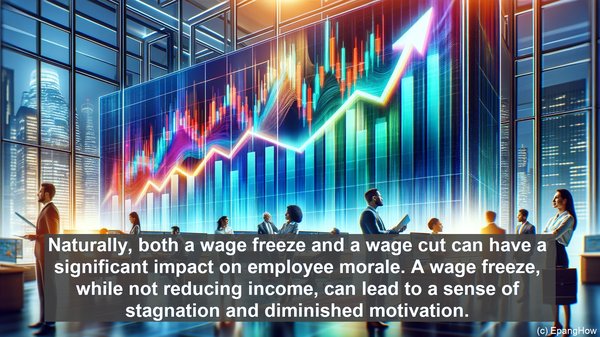Introduction: The Significance of Compensation
Greetings, ladies and gentlemen! In the realm of employment, compensation plays a pivotal role. It not only reflects an individual’s value within an organization but also serves as a means of sustenance and motivation. Today, we’ll be exploring two terms that often emerge in discussions surrounding compensation: wage freeze and wage cut.
Defining the Terms
Before we delve deeper, let’s establish the definitions. A wage freeze refers to a period during which an organization refrains from increasing employee salaries. On the other hand, a wage cut involves a reduction in the existing salary, often in response to financial constraints or organizational restructuring.

Wage Freeze: Implications and Rationale
When an organization opts for a wage freeze, it essentially maintains the status quo in terms of compensation. While this may seem unfavorable to employees, it can be a strategic move during uncertain economic times. By avoiding salary increments, the organization can allocate resources to other areas, such as research and development or infrastructure. Additionally, a wage freeze may be a temporary measure, implemented until the organization’s financial stability is restored.
Wage Cut: A Deeper Impact
Unlike a wage freeze, a wage cut directly affects an employee’s take-home pay. This reduction can be a fixed percentage or a variable amount, depending on the organization’s policies. While it may be a challenging decision for employers, a wage cut can be a means of avoiding more severe measures, such as layoffs. By reducing salaries across the board, the organization can maintain its workforce while mitigating financial strain.
Employee Reactions and Morale
Naturally, both a wage freeze and a wage cut can have a significant impact on employee morale. A wage freeze, while not reducing income, can lead to a sense of stagnation and diminished motivation. On the other hand, a wage cut can be more demoralizing, as it directly affects an individual’s financial well-being. In such cases, effective communication and transparency from the organization are crucial, ensuring that employees understand the rationale behind the decision and the steps being taken to address the situation.
Long-Term Implications and Recovery
Whether it’s a wage freeze or a wage cut, the effects can extend beyond the immediate period. Employees may consider alternative job opportunities, seeking organizations that offer more favorable compensation. Additionally, the recovery process, once the organization’s financial situation improves, can be complex. Reinstating salaries to previous levels or implementing gradual increments requires careful planning and consideration.

